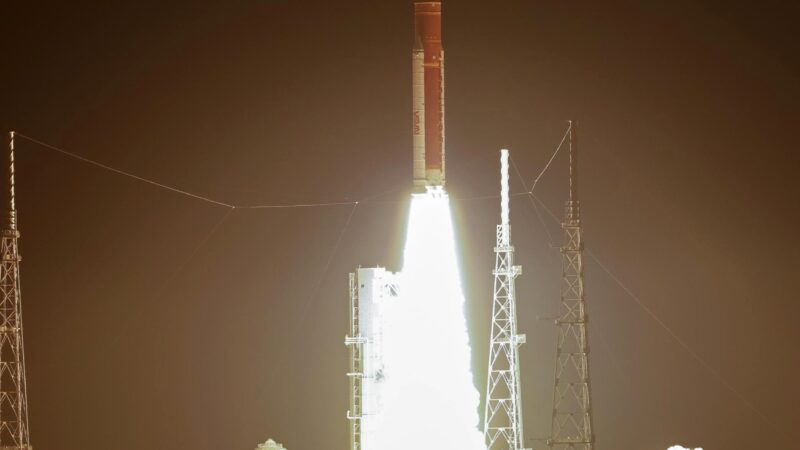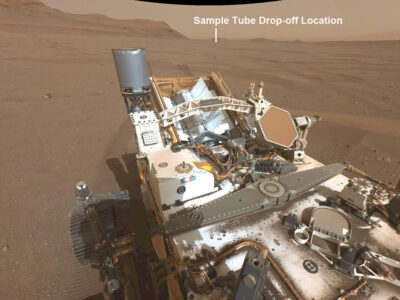Disordered data – “Voyager 1” has another unknown problem
Of all NASA missions, none visited as many planets and moons as Voyager 1[1][2] launched in 1977, nor did it offer so many new perspectives on exoplanets.

Artist’s Concept of Voyager
Voyager is a large-scale space exploration vehicle. Originally conceived as a “long journey” through the solar system from Jupiter to Pluto, it was then scaled down to a more moderate mission, known as the Sailor-Jupiter-Saturn mission, until it incarnated as Voyager on the eve of its launch, a mission objective that never changed and will remain in the future. The original price tag of nearly a billion dollars made it the second most expensive planetary voyage, after the Vikings[3], which landed on Mars in 1976.
Today, the data it returns reflects that he may have had problems. The probe is still functioning normally and continues to return scientific data, but the mission team is looking for the source of the system’s data problems.
The engineering team at NASA’s Voyager 1 probe is trying to unravel a mystery: Our interstellar explorers are still functioning normally, receiving and executing commands from Earth, while also collecting and returning scientific data normally, but the readings from the attitude articulation and control system ( AACS ) do not reflect what is actually happening on the probe.
For the 45-year-old probe, AACS controlled its direction of travel, and in other missions, it allowed the high-gain antenna of Voyager 1 (relatively narrower radiation direction, and more concentrated radiation in some directions) to point precisely at Earth, enabling it to send data back. All indications are that AACS is still working, but what it returns is invalid telemetry data, such as data that may appear to be randomly generated or that does not reflect any possible state that AACS is supposed to be in.
This problem does not trigger any on-board fail-safe system, which puts the detector in a “safe mode” state that performs only the necessary operations, giving engineers time to diagnose the problem. Voyager 1’s signal also did not weaken, suggesting that the high-gain antenna was maintained in the prescribed direction toward Earth.

Voyager 1
The team of engineers will continue to closely monitor Voyager 1’s signals to determine whether the invalid data came directly from AACS or from other systems involved in generating and sending telemetry. Until they better understand the nature of the problem, the team can’t predict whether this will affect how long the detector can still collect and transmit scientific data.
Voyager 1 is currently 23.3 billion kilometers from Earth, and it takes 20 hours and 33 minutes to complete this distance alone, which means that it takes about two days to send a message from Earth to Voyager 1 and get a reply, and the mission team has become accustomed to this kind of “delayed reply”.
“At this stage of the Voyager mission, it is normal for such a problem to arise.” Suzanne Dodd, director of the Voyager 1 and 2 programs at NASA’s Jet Propulsion Laboratory, said, “Both probes have been working for nearly 45 years, which far exceeds mission planners’ expectations.” The interstellar space they live in is a high-radiation environment where no spacecraft have flown into before, so the engineering team faces some huge challenges. But I think if there is a way to solve this problem with AACS, our team will definitely find it. ”

NASA’s Voyager 1 probe, pictured here, along with its twin Voyager 2, has been exploring our solar system since 1977
Nor may the team be able to find the source of the anomaly and choose to adapt to it, Dodd said; if they do, they may be able to fix the problem by changing the software or by using one of the detector’s redundant hardware systems.
This isn’t the first time the Voyager 1 team has relied on spare hardware: In 2017, Voyager 1’s main thrusters showed signs of degradation, so engineers switched to another set of thrusters that had originally been used during the probe’s encounter with the planet. These thrusters have been in use for 37 years and are still functional today.
Voyager 1’s twin Voyager 2 probe continues to operate normally, currently 19.5 billion kilometers from Earth.

Voyager 2
Both Voyager were launched in 1977, operating far longer than mission planners expected, and are the only two spacecraft to collect data in interstellar space. The information they provide from that faraway space helps push us to a deeper understanding of the heliosphere, the diffuse barrier that the sun forms around planets in the solar system.
Today, each detector produces about 4 watts less power per year, which limits the number of systems the detector can operate. The mission’s engineering team has shut down various subsystems and heaters to reserve power for scientific instruments and critical systems, and none of the scientific instruments have been shut down due to a drop in power yet, and the Voyager team is working to keep both probes running, expecting to return unique scientific data after 2025.
While engineers continue to work to solve the mystery that Voyager 1 has brought to them, the mission’s scientists will continue to make the most of the data coming from the probe’s unique vantage point.
Reference:











It was a difficult journey